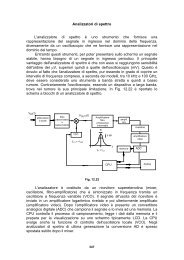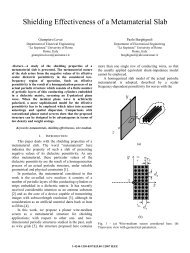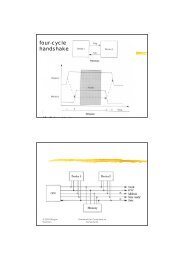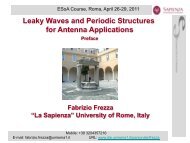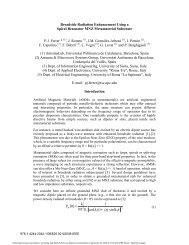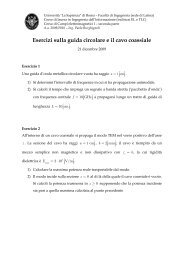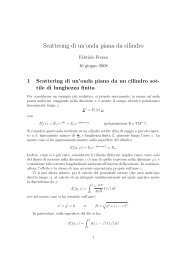Introduction to Traveling-Wave antennas.pdf
Introduction to Traveling-Wave antennas.pdf
Introduction to Traveling-Wave antennas.pdf
You also want an ePaper? Increase the reach of your titles
YUMPU automatically turns print PDFs into web optimized ePapers that Google loves.
7 <strong>Introduction</strong> <strong>to</strong> TWAFigure 7: Equivalent Transverse Transmission Network of Groove guidethe dielectric medium in<strong>to</strong> account. Moreover, above the transformer, an additionalsusceptance B s appears.The stub and main guides are no longer the same, so their wavenumbers andcharacteristic admittances are also different.Figure 8: Effect of the structure asymmetry on the propagation characteristicsAgain, α can be varied by changing the slot location d. However, it was foundthat a ′ is also a good parameter <strong>to</strong> change for this purpose.An interesting variation of the previous structures has been developed and analyzed.It is based on a ridge waveguide rather than a rectangular waveguide. In thestructures based on rectangular waveguide, the asymmetry was achieved by placingthe stub guide, or locating the longitudinal slot, off-center on the <strong>to</strong>p surface. Herethe <strong>to</strong>p surface is symmetrical, and the asymmetry is created by having unequal stublengths on each side under the main-guide portion.The transverse equivalent networks, <strong>to</strong>gether with the associated expressions forthe network elements, were adapted and extended <strong>to</strong> apply <strong>to</strong> these new structures.European School of Antennas




